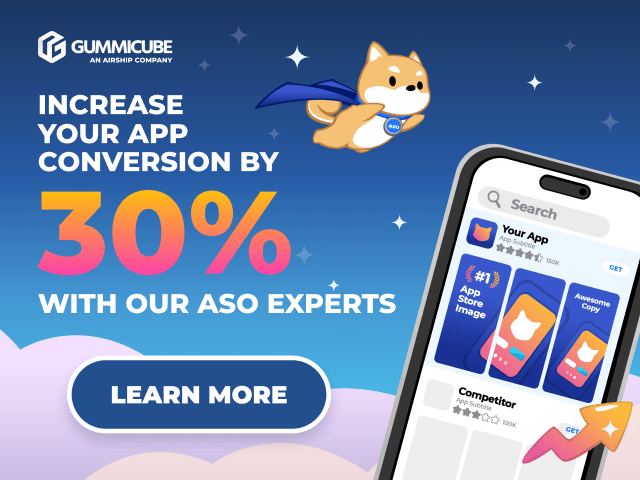
Take a look at the growth metrics that will start to play a greater part in influencing business decisions. Growth metrics are performance indicators on everything from how users interact with the app to what stages have the highest engagement or churn rates. They play an essential part in providing insight to data related to user acquisition, conversion, retention and sales in order to gauge performance based on business goals. Establishing which growth metrics are most valuable to your company and actively tracking them provides invaluable insight into past activity that can help a company improve business success, as well as:
- Which products or services generate the most revenue growth
- Any weak areas in your product that may be hindering growth
- Which ad campaigns deliver the most new users or best retention rates
- Which campaigns deliver the best ROI
Growth Metrics that Stand the Test of Time
Whilst a lot of businesses have come up with unique ways of executing growth marketing strategies, they will always need to refer back to a set of key target growth metrics. Below are some growth metrics you may already be familiar with, however they are essential when it comes to getting the full picture of your app’s performance.
- Revenue Generation – This is the most basic growth metric, which details the total amount of money your business receives from its customers in a set timeframe. If revenue is falling short of expectations, it often means that there needs to be a deeper analysis of the sales approach.
- Average Revenue Per User (ARPU) – ARPU is the amount of money a company can expect to receive from one user in a set period of time. This can be calculated by dividing total revenue by the number of users.
- Cost Per Lead or Customer Acquisition Cost (CPL or CAC) – It is important to measure how much it costs to acquire a lead. Cost per lead is measured by dividing your marketing spend by the number of leads generated in a chosen time frame.
- Conversion Rates – The number of leads that become a customer or take a specific action is your conversion rate. This metric is highly variable depending on a company’s goals and what they consider a conversion – is it a customer subscribing or buying a product for example?
- Cost Per Customer (CPC) Acquisition – How many leads does it take to gain a new customer on average based on your conversion rate? Take your cost per lead and divide it by your conversion rate to understand how much each new customer costs your business.
For example: your cost per lead = £10 and your conversion rate is 20%
Then your Cost Per Customer Acquisition = 10/0.2 = £50
The goal is for the value of the customer (i.e. how much they purchase or spend) to be higher than the acquisition cost as much as possible.
- Churn Rates – Churn rate can refer to the number of users or customers that are dropping off in a given period or the amount of revenue that is lost due to users dropping off. This is a metric that you don’t want to see grow, and if it does it needs to be addressed immediately.
- Lifetime Value (LTV) – LTV is an estimate of the average revenue that a customer will generate throughout their lifespan as a customer. One way of calculating this is dividing the ARPU by the churn rate.
The retention metrics that are most commonly relied on by app businesses specifically are Daily Active Users (DAUs) or Monthly Active Users (MAUs). With these metrics a business can get a better sense of their user base that are actively engaged with their app, which can be more insightful than vanity metrics like total installs. However, when it comes to apps where the model does not seek to increase daily active users – such as dating apps (see more on successful app marketing for dating apps here) where the aim is to successfully create relationships between users and after which the app will have served its purpose – metrics that focus on ROI or ARPU often reveal themselves to be more valuable.
Remember, your key growth metrics will be very much dependent on your product and business model, so ensure that you define the key actions and monetisation factors that will inform your growth targets.
How do we measure success?
Using mobile first tools:
Thankfully measuring these metrics has become a lot easier with the continued advancements of mobile first measurement tools. Businesses are now able to create a unique tech stack which cover analytics, attribution, mCRM & mobile marketing automation, paid and organic growth, customer database management and more. These tools are making it easier to interpret data, extract useful insights and define business objectives. Yodel Mobile brings these tools together to ensure you have a holistic view of your users, from acquisition to engagement.
You can read more about ensuring you implement the right mobile tools here.
The North Star Metric:
There is typically a metric that is slightly more important for your business than the rest, which is called a focus metric, otherwise known as a north star metric. The north star metric gives your business clarity on what the product needs to be optimising for and it communicates the impact of any changes to the rest of the company. Defining a north star metric will simplify your growth ambitions and align different factions of your app business towards a shared vision and common goal.
A north star metric should consist of 2 parts:
- a statement of your product vision
- a metric that serves as a key measure of your current product strategy
Your north star metric must be derived from a true understanding of what action provides realized value to the customer. “Daily Active Users” or “Registered Users” often say very little about what your customers value about your product.
For example, Facebook famously spent a lot of time on ensuring a new user has at least 7 friends within the first 10 days, as this was the turning point where a new user would most likely become a regular one. Whatsapp, on the other hand, would benefit from measuring the amount of messages a user sends in a given time frame.
What to expect for 2020
The volume of apps and the competition for visibility in stores has risen sharply over the past few years and there are no signs of this slowing down. It will be even more essential to have a well-researched and high quality product in order to stand out from the crowd. This means delving further into the data and key metrics and using this to outline your company’s north star metric. This will be crucial in establishing the turning point where a curious new user becomes a regular user and will provide solid foundations as your company plans for growth in 2020.
As a growing number of apps move towards having a subscription service, measuring lifetime value has also become increasingly important. Subscription services rely heavily on users continuing to engage with the app, so it becomes crucial to look at long-term engagement and retention. As a result of this, measuring the churn rate has become equally important, as it reveals how many users feel they no longer have a purpose for the app. Using mobile first tools, it is possible to go a step further and break this down to see where users are churning within the app. This can help outline common pain points or areas of the app that lack clarity, as well as the areas of the app that are doing particularly well and have the potential to be expanded.
It is evident that never before has it been more important for app success that a holistic and integrated app marketing strategy is implemented using tailored growth metrics to extract crucial insights that will boost sustainable growth.










